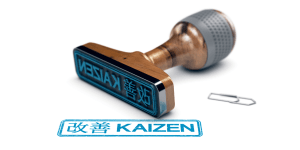Introduction to Lean Methodology
As a professional striving for efficiency and optimal productivity, I have always been intrigued by the concept of Lean Methodology. In today’s fast-paced business world, where every second counts, it is crucial to find ways to streamline processes and eliminate waste. Lean Methodology provides a systematic approach to achieve this goal. In this article, I will delve into the world of Lean Methodology, exploring its principles, benefits, and applications. By the end, you will have a comprehensive understanding of how to master Lean Methodology and harness its power to optimize efficiency in any organization.
Understanding Lean Methodology
To fully grasp Lean Methodology, it is essential to understand its core principles. At its heart, Lean Methodology is a philosophy that aims to eliminate waste and maximize value creation. It originated from the Toyota Production System and has since been adopted across various industries worldwide. The fundamental idea behind Lean Methodology is to continuously improve processes by identifying and eliminating activities that do not add value to the end product or service.
Lean Methodology emphasizes the importance of customer value and places a strong focus on customer satisfaction. By understanding customer needs and expectations, organizations can align their processes to deliver exceptional value while minimizing waste. This customer-centric approach sets Lean Methodology apart from traditional process improvement methods.
The Principles of Lean Methodology
To effectively implement Lean Methodology, it is crucial to embrace its core principles. There are five key principles that serve as the foundation for Lean Methodology:
1. Identify Value
The first step in Lean Methodology is to identify what the customer perceives as value. By understanding the customer’s perspective, organizations can align their processes to deliver products or services that meet or exceed customer expectations.
2. Map the Value Stream
Once the value is identified, the next step is to map the value stream. This involves visualizing the entire process from start to finish, including all the steps and activities involved. By mapping the value stream, organizations can identify areas of waste and inefficiency.
3. Create Flow
After mapping the value stream, the focus shifts to creating flow. Flow refers to the seamless movement of products or services through the value stream without interruptions or delays. By eliminating bottlenecks and streamlining the flow, organizations can reduce lead times and improve overall efficiency.
4. Establish Pull
Lean Methodology advocates for a pull-based system rather than a push-based system. In a pull-based system, products or services are produced based on customer demand, ensuring that inventory levels are optimized and waste is minimized.
5. Pursue Perfection
The final principle of Lean Methodology is the pursuit of perfection. Lean organizations continuously strive for improvement, seeking to eliminate waste and enhance value creation. This principle emphasizes the importance of a culture of continuous learning and improvement.
Benefits of Implementing Lean Methodology
Implementing Lean Methodology offers numerous benefits to organizations across various industries. Here are some key advantages of embracing Lean Methodology:
1. Increased Efficiency
One of the primary benefits of Lean Methodology is increased efficiency. By eliminating waste and streamlining processes, organizations can significantly reduce lead times, improve productivity, and enhance overall efficiency. This increased efficiency translates into cost savings and improved customer satisfaction.
2. Cost Savings
Lean Methodology helps organizations identify and eliminate activities that do not add value, thereby reducing costs. By streamlining processes and optimizing resource utilization, organizations can minimize waste and achieve significant cost savings.
3. Improved Quality
Lean Methodology places a strong emphasis on quality. By focusing on customer value and continuous improvement, organizations can identify and address quality issues. This proactive approach helps prevent defects and ensures that products or services meet or exceed customer expectations.
4. Enhanced Employee Engagement
Implementing Lean Methodology creates a culture of continuous improvement and empowers employees to contribute to the organization’s success. By involving employees in process improvement initiatives and providing them with the necessary training and tools, organizations can enhance employee engagement and foster a sense of ownership.
5. Competitive Advantage
Lean Methodology enables organizations to respond quickly to changing customer needs and market demands. By embracing Lean principles, organizations can become more agile, flexible, and responsive, giving them a competitive edge in the market.
Lean Methodology in Information Systems
In today’s digital age, information systems play a crucial role in organizational efficiency. Lean Methodology can be applied to streamline processes within information systems, resulting in improved performance and effectiveness. By eliminating unnecessary steps, automating repetitive tasks, and optimizing data flow, organizations can achieve significant gains in efficiency and productivity.
Lean Methodology in information systems involves understanding the entire value stream, from data collection and processing to reporting and decision-making. By mapping the information flow and identifying areas of waste, organizations can implement targeted improvements to enhance the overall performance of their information systems.
Applying Lean Methodology to Streamline Processes
Now that we have explored the principles and benefits of Lean Methodology, it is time to dive into the practical aspects of applying Lean Methodology to streamline processes. The first step in this journey is to identify the key processes within your organization that can benefit from Lean Methodology.
Once the processes are identified, the next step is to map the current state of these processes. This involves documenting each step, activity, and decision point involved in the process. By visualizing the current state, organizations can identify areas of waste, bottlenecks, and inefficiencies.
After mapping the current state, the focus shifts to designing the future state. This involves envisioning an ideal process that eliminates waste and maximizes value creation. Organizations should aim for a future state that is efficient, flexible, and customer-centric.
To bridge the gap between the current state and the future state, organizations can leverage a range of tools and techniques. These tools and techniques include value stream mapping, Kaizen events, 5S methodology, Kanban systems, and more. Each tool and technique serves a specific purpose and can be customized to suit the unique needs of the organization.
By applying Lean Methodology tools and techniques, organizations can gradually transform their processes and achieve optimal efficiency. It is important to note that Lean Methodology is not a one-time event but rather a continuous journey of improvement. Organizations should foster a culture of continuous learning, provide training and support to employees, and regularly monitor and evaluate the effectiveness of Lean initiatives.
Case Studies: Successful Implementation of Lean Methodology
To gain a better understanding of the real-world impact of Lean Methodology, let’s explore a few case studies of organizations that have successfully implemented Lean principles:
Case Study 1: Toyota
Toyota, the birthplace of Lean Methodology, is a prime example of the power of Lean principles. By embracing Lean Methodology, Toyota revolutionized the automotive industry and became a global leader in efficiency and quality. Through continuous improvement, waste elimination, and employee empowerment, Toyota has achieved remarkable success and set the benchmark for Lean implementation.
Case Study 2: Amazon
Amazon, the e-commerce giant, has leveraged Lean principles to transform the way it operates. By optimizing its supply chain, implementing Just-in-Time inventory management, and constantly improving its processes, Amazon has established itself as a leader in customer satisfaction and operational efficiency.
Case Study 3: Boeing
Boeing, the aerospace company, has applied Lean principles to its manufacturing processes, resulting in significant improvements in efficiency and quality. By streamlining production flow, eliminating waste, and empowering employees, Boeing has reduced lead times, improved productivity, and delivered exceptional value to its customers.
These case studies highlight the diverse applications of Lean Methodology across different industries and demonstrate the tangible benefits that can be achieved through its implementation.
Training and Certification in Lean Methodology
To effectively implement Lean Methodology within an organization, it is essential to equip employees with the necessary knowledge and skills. Training and certification programs in Lean Methodology provide individuals with a comprehensive understanding of Lean principles and tools, enabling them to drive process improvement initiatives.
There are various training and certification options available for Lean Methodology, ranging from introductory courses to advanced certifications. These programs cover topics such as Lean principles, value stream mapping, waste elimination, Kanban systems, and more. By investing in Lean training and certification, organizations can ensure that their employees have the expertise required to maximize the benefits of Lean Methodology.
Challenges and Limitations of Lean Methodology
While Lean Methodology offers numerous benefits, it is important to acknowledge the challenges and limitations associated with its implementation. Some common challenges include:
1. Resistance to Change
Implementing Lean Methodology requires a cultural shift within the organization. Resistance to change can hinder the adoption of Lean principles and impede progress. Overcoming resistance to change requires strong leadership, effective communication, and employee engagement.
2. Lack of Resources
Implementing Lean Methodology often requires dedicated resources, including time, money, and personnel. Organizations with limited resources may face challenges in effectively implementing and sustaining Lean initiatives.
3. Complex Processes
In organizations with complex processes, implementing Lean Methodology can be challenging. The interconnected nature of processes and the involvement of multiple stakeholders can complicate the implementation process. It is important to break down complex processes into manageable components and prioritize improvement initiatives.
Despite these challenges, organizations that are committed to Lean Methodology and willing to overcome these obstacles can reap the rewards of improved efficiency, cost savings, and customer satisfaction.
Conclusion: Embracing Lean Methodology for Optimal Efficiency
In conclusion, Lean Methodology is a powerful tool for streamlining processes and achieving optimal efficiency. By embracing Lean principles, organizations can eliminate waste, enhance value creation, and deliver exceptional value to customers. Whether in manufacturing, service, healthcare, or information systems, Lean Methodology offers a systematic approach to continuous improvement.
To master Lean Methodology, organizations should understand its principles, benefits, and limitations. By mapping value streams, creating flow, establishing pull systems, and pursuing perfection, organizations can transform their processes and achieve remarkable results. Training and certification in Lean Methodology provide individuals with the necessary knowledge and skills to drive Lean initiatives within their organizations.
While implementing Lean Methodology may present challenges, the benefits far outweigh the obstacles. Increased efficiency, cost savings, improved quality, enhanced employee engagement, and a competitive advantage are just a few of the rewards that await organizations that embrace Lean Methodology. So, embark on the Lean journey, unlock the full potential of your processes, and experience the transformative power of Lean Methodology for optimal efficiency.
CTA: Are you ready to embark on the Lean journey and streamline your processes for optimal efficiency? Contact us today to learn how our Lean training and consulting services can help you achieve remarkable results.









